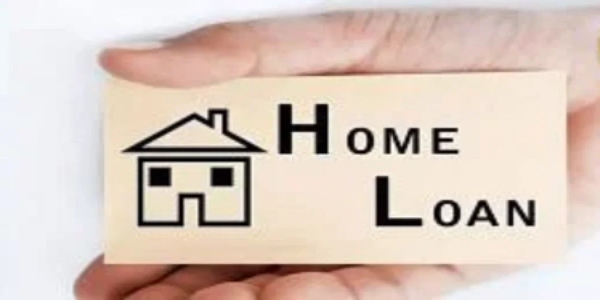The home loan sector has weathered its fair share of challenges and triumphs in 2023, shaped significantly by market dynamics, regulatory policies, and economic shifts.
According to RBI data, the outstanding amount for housing loans in March 2023 reached Rs 19,36,428 crore, marking a 15 percent year-on-year growth. During the fourth quarter of 2022-23, the all-India house price index (HPI) exhibited a notable 4.6 percent year-on-year increase.
As we approach 2024, the home loan market stands at a crossroads, influenced by a myriad of economic, regulatory, and technological factors. For potential homebuyers, investors, and industry stakeholders, understanding the dynamics of this market is crucial. This article delves into the key trends and forecasts shaping the 2024 outlook for home loans, providing a comprehensive guide for navigating this complex landscape.
2023 Sector Performance: A Mixed Bag
According to multiple industry reports and studies, the home loan sector in 2023 experienced a mixed performance. While the demand for housing remained robust, driven by factors such as urbanization, low interest rates, and government initiatives, challenges like rising construction costs and a shortage of affordable housing units cast a shadow over the sector.
Studies conducted by real estate and financial experts pointed to a steady increase in home loan applications, showcasing a resilient market in the face of economic uncertainties. However, the actual disbursement of loans faced hurdles due to stringent eligibility criteria and a cautious lending environment adopted by financial institutions.
RBI’s Policy Stance and Its Impact
The Reserve Bank of India (RBI) played a pivotal role in shaping the home loan landscape in 2023 through its monetary policy decisions. The central bank, cognizant of the need to balance economic growth and inflation, maintained an accommodative stance for most of the year. This translated into a series of interest rate cuts aimed at stimulating spending and investment.
The impact on housing loans and sales was twofold. On one hand, the lower interest rates acted as an impetus for potential homebuyers, making the prospect of homeownership more affordable. On the other hand, cautious lending practices by financial institutions, driven by the need to manage risk, tempered the acceleration of loan disbursements.
Expectations and Trends for 2024
Looking ahead to 2024, several trends are poised to shape the home loan sector. One notable expectation is a continued focus on affordable housing, with the government and financial institutions likely to introduce measures to facilitate easier access to home loans for first-time buyers. Schemes incentivising developers to create affordable housing units could also gain prominence.
The affordability for home purchases is expected to improve for the better in 2024, based on the expectation of a 60-80 bps repo rate cut during the year, according to a JLL report on the Home Purchase Affordability Index (HPAI).
Another trend to watch is the role of technology in streamlining the home loan application process. Digital platforms and fintech solutions are anticipated to play a more significant role in providing a seamless and efficient experience for borrowers, from application to approval.
Consumer Behavior and Market Sentiment
Consumer behavior in the home loan market is influenced by economic conditions, market sentiment, and generational shifts. In 2024, we might see a more cautious approach from borrowers, influenced by economic uncertainties. The growing influence of Millennials and Gen Z, who are entering the housing market in increasing numbers, could shift preferences towards more flexible and technology-driven loan products.
What to Watch Out For
While the outlook for home loans in 2024 appears optimistic, there are potential headwinds that warrant attention. One critical factor is the trajectory of interest rates. Any significant deviation from the current accommodative stance by the RBI could impact the affordability of home loans, potentially dampening demand.
Economic stability and job market conditions also play a crucial role. A sudden downturn in the economy or a spike in unemployment could deter potential homebuyers, impacting both demand and the ability to repay loans.
Additionally, the regulatory environment is subject to change. Any alterations in policies related to lending norms, down payment requirements, or tax incentives could have cascading effects on the home loan sector.
The 2024 outlook for home loans is marked by a delicate balance between positive trends and potential challenges. The sector’s resilience in 2023, coupled with anticipated policy measures and evolving market dynamics, sets the stage for a dynamic year ahead. As stakeholders navigate the uncertainties, adaptability and a keen awareness of the broader economic landscape will be key in steering the home loan sector towards sustained growth.
In 2024, the Indian real estate sector anticipates key changes in the Interim Budget to address pressing concerns, particularly in home loans and affordable housing. Stakeholders advocate for a substantial increase in the tax deduction for home loan interest under Section 24 of the Income Tax Act, pushing for a raise from the current Rs 2 lakh limit to at least Rs 5 lakh. This adjustment is seen as vital to rejuvenating the market, particularly in the affordable homes category.
There’s also a call for a reassessment of qualifying criteria for affordable housing, with suggestions to increase the price limit from Rs 45 lakh to around Rs 70-75 lakh in metro cities. Such adjustments would broaden accessibility, enabling more buyers to benefit from government subsidies and reduced GST rates.
Additionally, expectations include the release of government-owned land for affordable housing, addressing shortages and potentially lowering overall real estate prices. These proposals aim to provide a significant boost to affordable housing, heavily impacted by the pandemic.
Moreover, high expectations surround the implementation of the interest subvention scheme for urban housing, pending cabinet approval. This scheme, part of the Pradhan Mantri Awas Yojana, seeks to offer substantial interest subsidies on housing loans, potentially extending the cap to Rs 50 lakh and benefitting a wide range of urban homebuyers, particularly those in lower-income groups, thereby revitalizing the housing market.
Source By: news18










